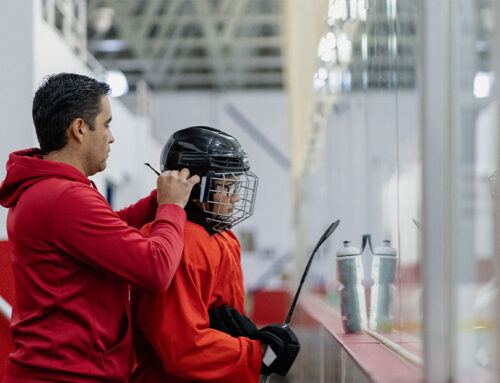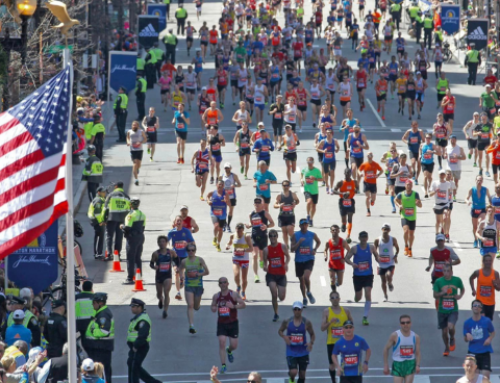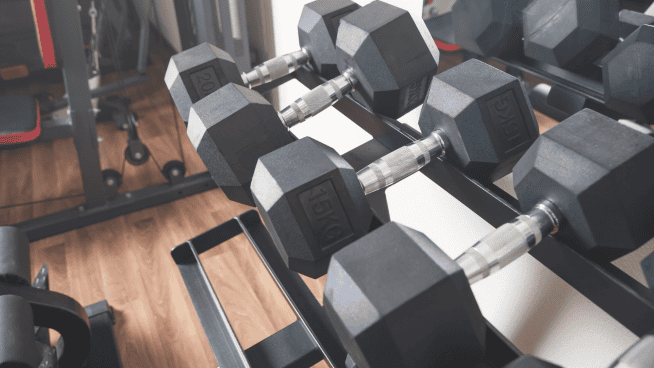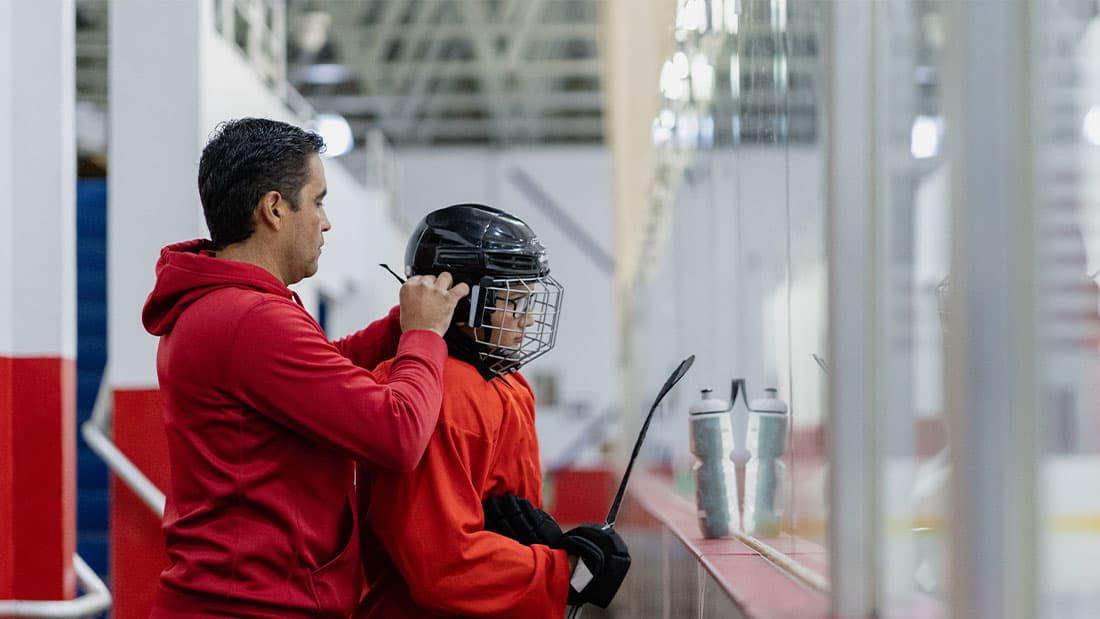There are a lot of strangely named exercises out there. The Bulgarian Split Squat. The Skull Crusher. The Third World Squat.
The “Bunkie” isn’t as strange as it is giggle-inducing. It invokes an image of someone doing a Push-Up on a bunk bed, or the name of your pet pug who won’t stop drooling on himself.
Fortunately, the Bunkie is neither of those things. It’s actually a legitimate way to test your core strength and point out weaknesses in your fascia, which are connective tissue in your body.
But first things first. Let’s address that awkward exercise name. Where does it come from? An ancient civilization that perished thousands of years ago? Some dude named Frederick Bunkie who accidentally discovered that his favorite couch position was actually a physical therapy breakthrough?
There’s actually a fairly simple explanation. In Afrikaans, one of many languages spoken in South Africa, the word “bankie” means “ little bench.” Since the Bunkie Test calls for a weight bench to be used in performance, it’s easy to see how the word derives from the original.
So, what’s the test? Why would anyone do it? Can’t I just Plank for an hour and call it a day?
The Bunkie Test is a series of five isometric holds meant to test functional strength in and around the core. It hits the following five specific fascial lines in the body:
- The anterior power line
- The medial stabilizing line
- The lateral stabilizing line
- The posterior stabilizing line, and
- The posterior power line
The prevailing thought here is that if an athlete can hold each position for 30-45 seconds with perfect form, he or she has a neutral, balanced fascia. If they can’t, or if the athlete feels any muscle strain or discomfort, he or she must have some core weaknesses to address. Weaknesses in these fascia lines can lead to injuries. The Bunkie Test allows a trainer or strength and conditioning coach to identify, based on which of the five positions the athlete struggles with, which line to address and strengthen.
How do you do it? What’s involved? As we mentioned before, the Bunkie Test is comprised of five moves. Lie on your back on the floor and elevate your feet on a bench while you lift your chest up with your elbows on the ground bent at 90 degrees. Hold for at least 30 seconds.
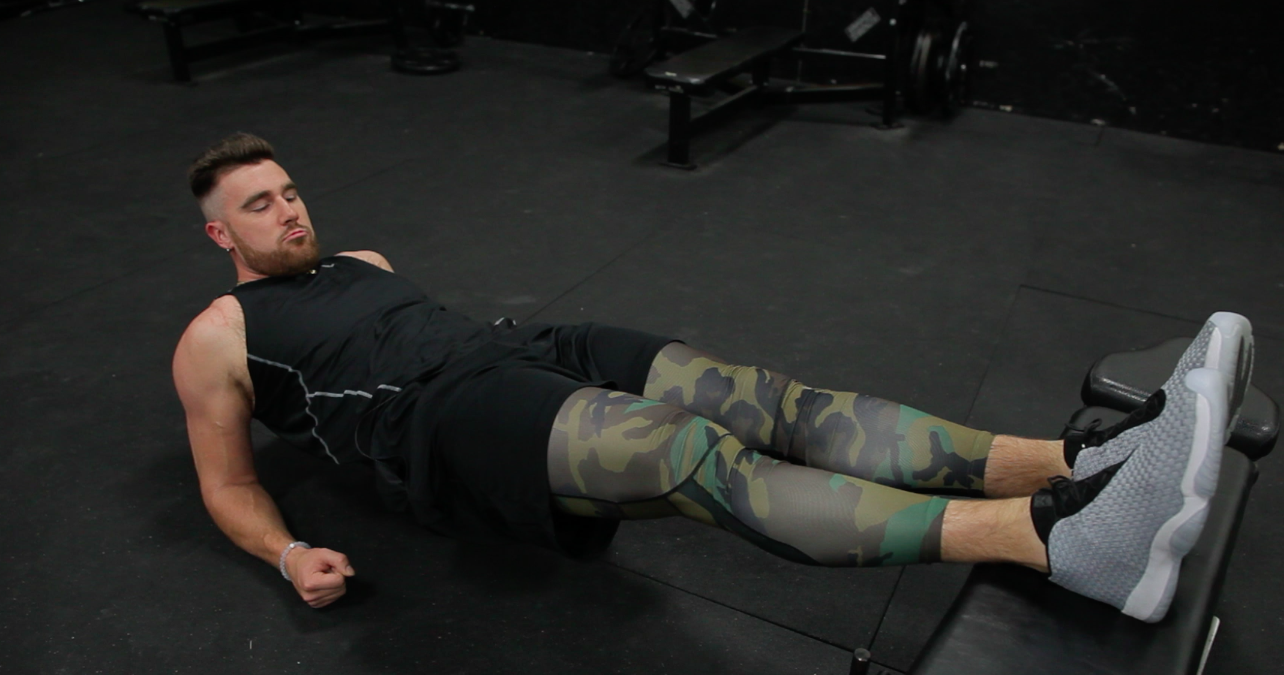
Kansas City Chiefs tight end Travis Kelce performing the Bunkie Test
Keeping the same hold, bend both knees while keeping your right foot on the bench. Bring your left leg up into the air and back, bending at the knee. Hold for at least 30 seconds.
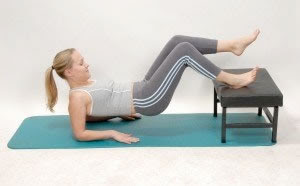
Image via LynoSport
From there, turn to each side, as if performing a Side Plank, and hold each for at least 30 seconds. A variation can be performed by lifting your top leg a few inches into the air instead of resting it on your bottom leg.
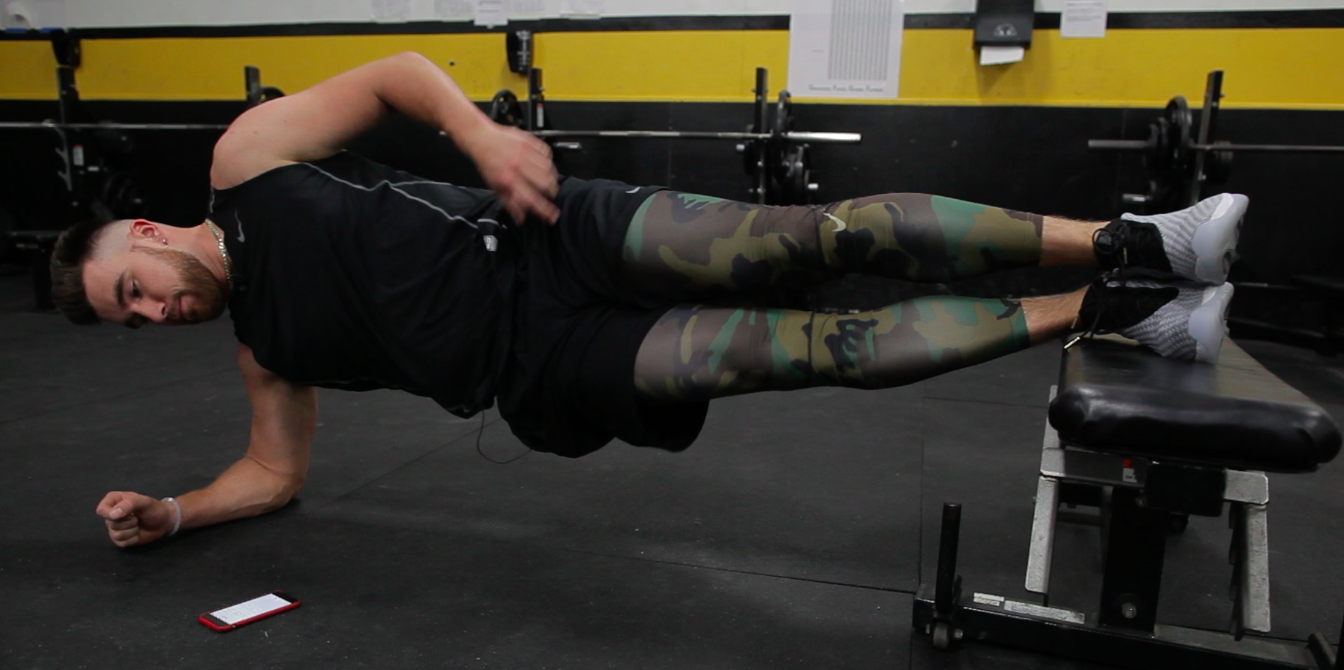
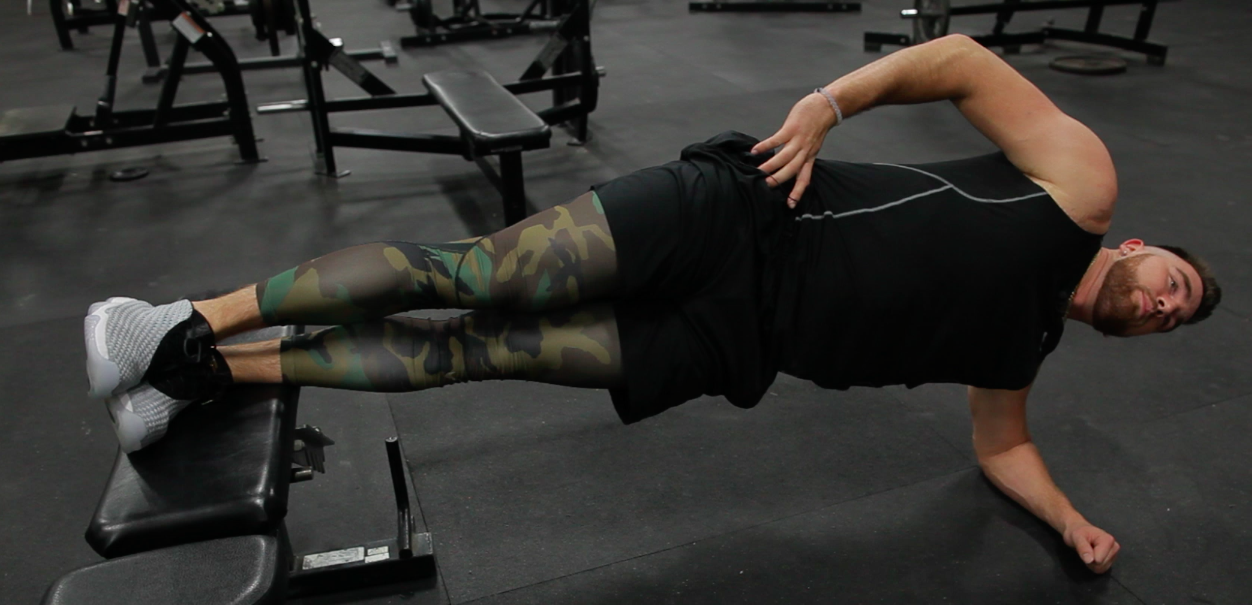
Finally, get into a traditional plank position with your arms on the ground, bent 90 degrees at the elbow, and your feet resting on the bench. Slowly pick your right leg up off the bench and hold a few inches in the air. Hold this position for at least 30 seconds.
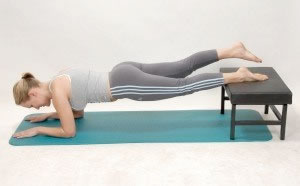
Image via LynoSports
If you held all five of these positions for at least 30 seconds, congrats! You can be released into the gym or the field and train to your heart’s desire. But if you struggled with any of them, you’ve got diminished mobility in a specific fascia line, meaning the muscles in that area are unable to contract to their fully expected ability, and that can lead to serious injury. Work with a coach or trainer to strengthen those areas and try the test again.
RECOMMENDED FOR YOU
MOST POPULAR
There are a lot of strangely named exercises out there. The Bulgarian Split Squat. The Skull Crusher. The Third World Squat.
The “Bunkie” isn’t as strange as it is giggle-inducing. It invokes an image of someone doing a Push-Up on a bunk bed, or the name of your pet pug who won’t stop drooling on himself.
Fortunately, the Bunkie is neither of those things. It’s actually a legitimate way to test your core strength and point out weaknesses in your fascia, which are connective tissue in your body.
But first things first. Let’s address that awkward exercise name. Where does it come from? An ancient civilization that perished thousands of years ago? Some dude named Frederick Bunkie who accidentally discovered that his favorite couch position was actually a physical therapy breakthrough?
There’s actually a fairly simple explanation. In Afrikaans, one of many languages spoken in South Africa, the word “bankie” means “ little bench.” Since the Bunkie Test calls for a weight bench to be used in performance, it’s easy to see how the word derives from the original.
So, what’s the test? Why would anyone do it? Can’t I just Plank for an hour and call it a day?
The Bunkie Test is a series of five isometric holds meant to test functional strength in and around the core. It hits the following five specific fascial lines in the body:
- The anterior power line
- The medial stabilizing line
- The lateral stabilizing line
- The posterior stabilizing line, and
- The posterior power line
The prevailing thought here is that if an athlete can hold each position for 30-45 seconds with perfect form, he or she has a neutral, balanced fascia. If they can’t, or if the athlete feels any muscle strain or discomfort, he or she must have some core weaknesses to address. Weaknesses in these fascia lines can lead to injuries. The Bunkie Test allows a trainer or strength and conditioning coach to identify, based on which of the five positions the athlete struggles with, which line to address and strengthen.
How do you do it? What’s involved? As we mentioned before, the Bunkie Test is comprised of five moves. Lie on your back on the floor and elevate your feet on a bench while you lift your chest up with your elbows on the ground bent at 90 degrees. Hold for at least 30 seconds.

Kansas City Chiefs tight end Travis Kelce performing the Bunkie Test
Keeping the same hold, bend both knees while keeping your right foot on the bench. Bring your left leg up into the air and back, bending at the knee. Hold for at least 30 seconds.

Image via LynoSport
From there, turn to each side, as if performing a Side Plank, and hold each for at least 30 seconds. A variation can be performed by lifting your top leg a few inches into the air instead of resting it on your bottom leg.


Finally, get into a traditional plank position with your arms on the ground, bent 90 degrees at the elbow, and your feet resting on the bench. Slowly pick your right leg up off the bench and hold a few inches in the air. Hold this position for at least 30 seconds.

Image via LynoSports
If you held all five of these positions for at least 30 seconds, congrats! You can be released into the gym or the field and train to your heart’s desire. But if you struggled with any of them, you’ve got diminished mobility in a specific fascia line, meaning the muscles in that area are unable to contract to their fully expected ability, and that can lead to serious injury. Work with a coach or trainer to strengthen those areas and try the test again.

